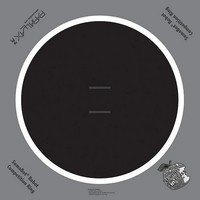27404 Parallax Inc, 27404 Datasheet - Page 111

27404
Manufacturer Part Number
27404
Description
COMPETITION RING FOR SUMOBOT
Manufacturer
Parallax Inc
Datasheet
1.27404.pdf
(266 pages)
Specifications of 27404
Accessory Type
Hobby and Education
Product
Microcontroller Accessories
Lead Free Status / RoHS Status
Contains lead / RoHS non-compliant
For Use With/related Products
SumoBot®
Lead Free Status / RoHS Status
Lead free / RoHS Compliant, Contains lead / RoHS non-compliant
- Current page: 111 of 266
- Download datasheet (6Mb)
ACTIVITY #4: READING THE QTI SENSORS MORE QUICKLY
How much time does it take to read QTIs? It depends a lot on the surface and the
lighting conditions in the room. If both QTIs are on the black surfaces in the examples
from Activities #2 and #3, they tend to be in the 1000 to 4000 range. The time
measurement the
RCTIME
Since there are two QTIs, that's 8 ms between servo pulses. What if the material is more
absorbent of infrared, and the room is dark? Maybe both QTIs will return a measurement
of 3600, which equates to 7.2 ms per QTI, and 14.4 ms for the pair of them. There's
probably 2 ms of processing time to execute all the commands in the
Read_Line_Sensors
for the
Chapter 1, Activity #2, there's probably still enough time to check the IR detectors
without slowing down the servos.
What if you want to add a pair of QTIs to check the back of the SumoBot? That's twice
the time, or 36.4 ms. That will slow the servos down, and there still hasn't been any time
to check the IR detectors. You might be able to fix the problem by checking some of the
sensors between one set of servo pulses, and another set of sensors between the next. It
will reduce the time between servo pulses, but at the same time, it will increase the risk
that your SumoBot won't see something in time, like its opponent or the white tawara
line.
time
√
√
(
RCTIME
Save and then run the modified program, starting with both QTIs over a black
portion of the practice ring.
Repeat your tests with the tawara line, and verify that the SumoBot is making the
correct navigation decisions.
ms
measurement of 2000 equates to 4 ms:
)
=
=
=
=
2000
4000
4
RCTIME
ms
measurements. That adds up to 18.4 ms. By the measurements in
RCTIME
×
µ
s
2
×
µ
subroutine, and another 2 ms worth of
measuremen
s
1000
×
1
command stores in a variable are in terms of 2 µs units. So, an
ms
1000
1
µ
ms
s
µ
s
t
×
2
µ
s
×
1000
1
ms
µ
s
PAUSE
commands to set up
Related parts for 27404
Image
Part Number
Description
Manufacturer
Datasheet
Request
R

Part Number:
Description:
Microcontroller Modules & Accessories DISCONTINUED BY PARALLAX
Manufacturer:
Parallax Inc

Part Number:
Description:
BOOK UNDERSTANDING SIGNALS
Manufacturer:
Parallax Inc
Datasheet:

Part Number:
Description:
TEXT INFRARED REMOTE FOR BOE-BOT
Manufacturer:
Parallax Inc
Datasheet:

Part Number:
Description:
BOARD EXPERIMENT+LCD NX-1000
Manufacturer:
Parallax Inc
Datasheet:

Part Number:
Description:
CONTROLLER 16SERVO MOTOR CONTROL
Manufacturer:
Parallax Inc
Datasheet:

Part Number:
Description:
BASIC STAMP LOGIC ANALYZER
Manufacturer:
Parallax Inc
Datasheet:

Part Number:
Description:
IC MCU 2K FLASH 50MHZ SO-18
Manufacturer:
Parallax Inc
Datasheet:

Part Number:
Description:
IC MCU 2K FLASH 50MHZ 28SSOP
Manufacturer:
Parallax Inc
Datasheet:














